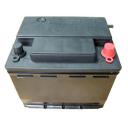Auto Warranty:Ready For a New Battery?

If you suspect that your battery is on it’s last legs there are a few basics to cover when deciding on a replacement. First, determine which size battery is appropriate for your car. You’ll also want to check the warranty dates printed on the battery, aiming for one that offers the longest free replacement time.
Consumer Reports goes into more detail:
Fresh is best. Batteries lose strength just sitting on a store shelf. Most are labeled with a shipping-date code. When shopping, look for a month code indicated by a letter (“A†for January, for example) and year (“6†for 2006). It’s best to choose a battery no more than six months old.
Insist on real-world performance. Cold-cranking amps (CCAs) are important, especially for those living in cold regions. CCAs are a measure of how much power a battery has at zero degrees Fahrenheit, when thickened engine oil makes an engine hardest to start and available battery power drops significantly. Generally, the higher the CCA rating, the greater the starting power of the battery regardless of temperature. In our tests, where batteries are charged at lower, more realistic voltage, we’ve found that few meet their cold-cranking claims. Only one new model provided the full 30 seconds of cranking power required by our CCA test this year, a decline from last year, when six passed.
Consider manufacturers’ CCA claims only as a rough guide, then choose a battery that performed well in our CCA tests.
Also look for a score of good or better in our life and reserve-capacity tests. A battery’s reserve capacity indicates how long it will power your car if the charging system fails or if the lights are left on when the engine is off. The models we tested with the best reserve capacity provided power for 120 to 150 minutes, but even models with the shortest reserve, 60 to 90 minutes, should provide sufficient power to get you to safety or start your car.
Pick the best warranty. Other numbers printed on the battery indicate warranty information. A code such as 24/84, for example, indicates a free-replacement period of 24 months and a prorated warranty of 84 months. It’s best to pick one with the longest free-replacement period available because the amount of reimbursement in the prorated period usually drops off quickly as the battery ages.
Choose the right battery for your climate. Chilling cold isn’t the hardest environment for batteries; hot temperatures actually cause more damage. While starting in frigid climates can be tough on a battery, heat saps more life over time. And the extra drain from air conditioning and increased under-hood temperatures in hot weather is especially taxing. Many batteries are specifically designed for Northern and Southern climates and are sold only in those regions.Dispose of your old battery safely. Batteries contain lead that is highly toxic, but they are easily recycled. Most states require retailers to collect old batteries to keep the harmful lead inside them outside of the waste stream. If you do your own installation, you may pay a “core charge†of a few dollars if you don’t have an old battery to trade when you make your purchase. This is normally credited when you bring in the old battery.



